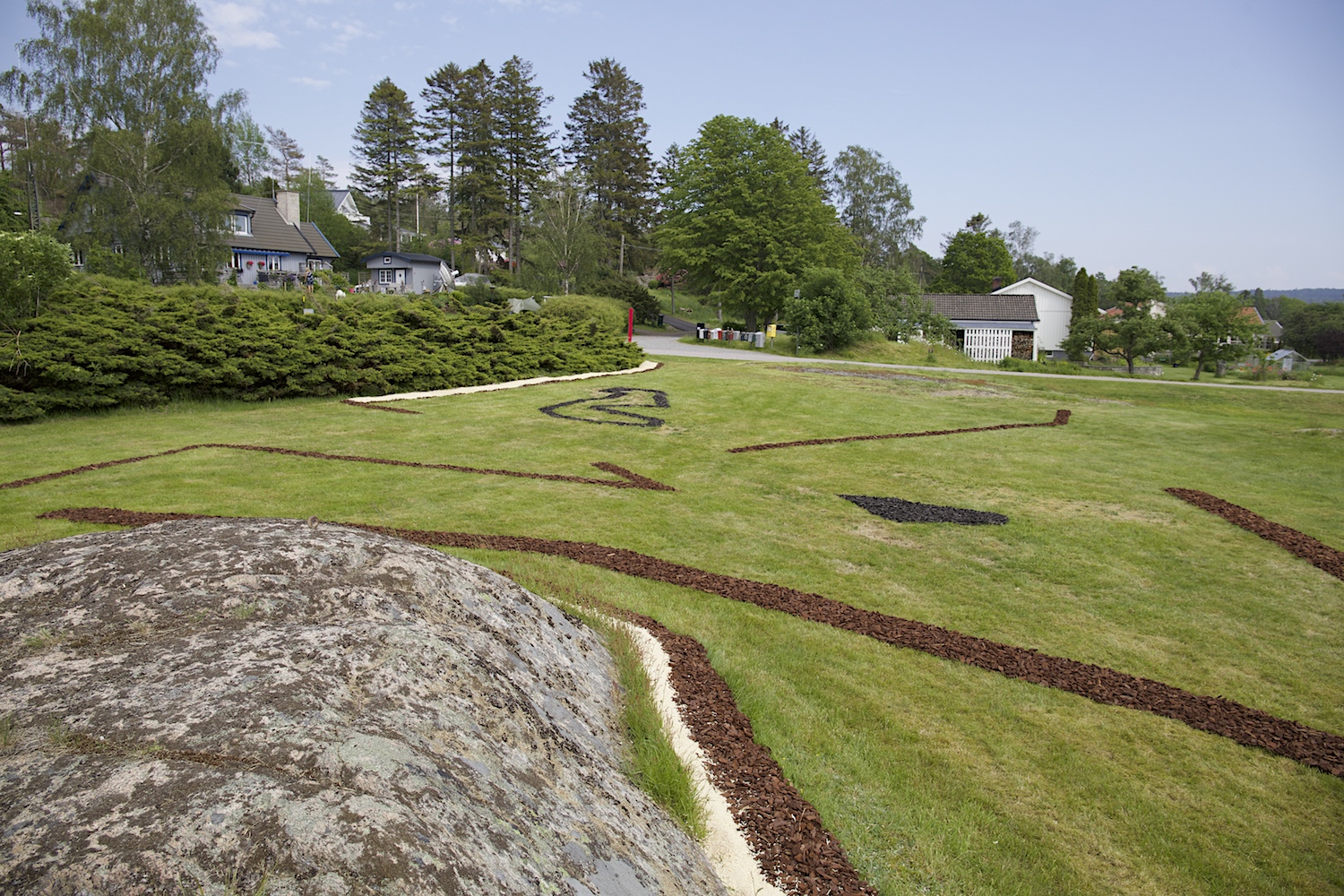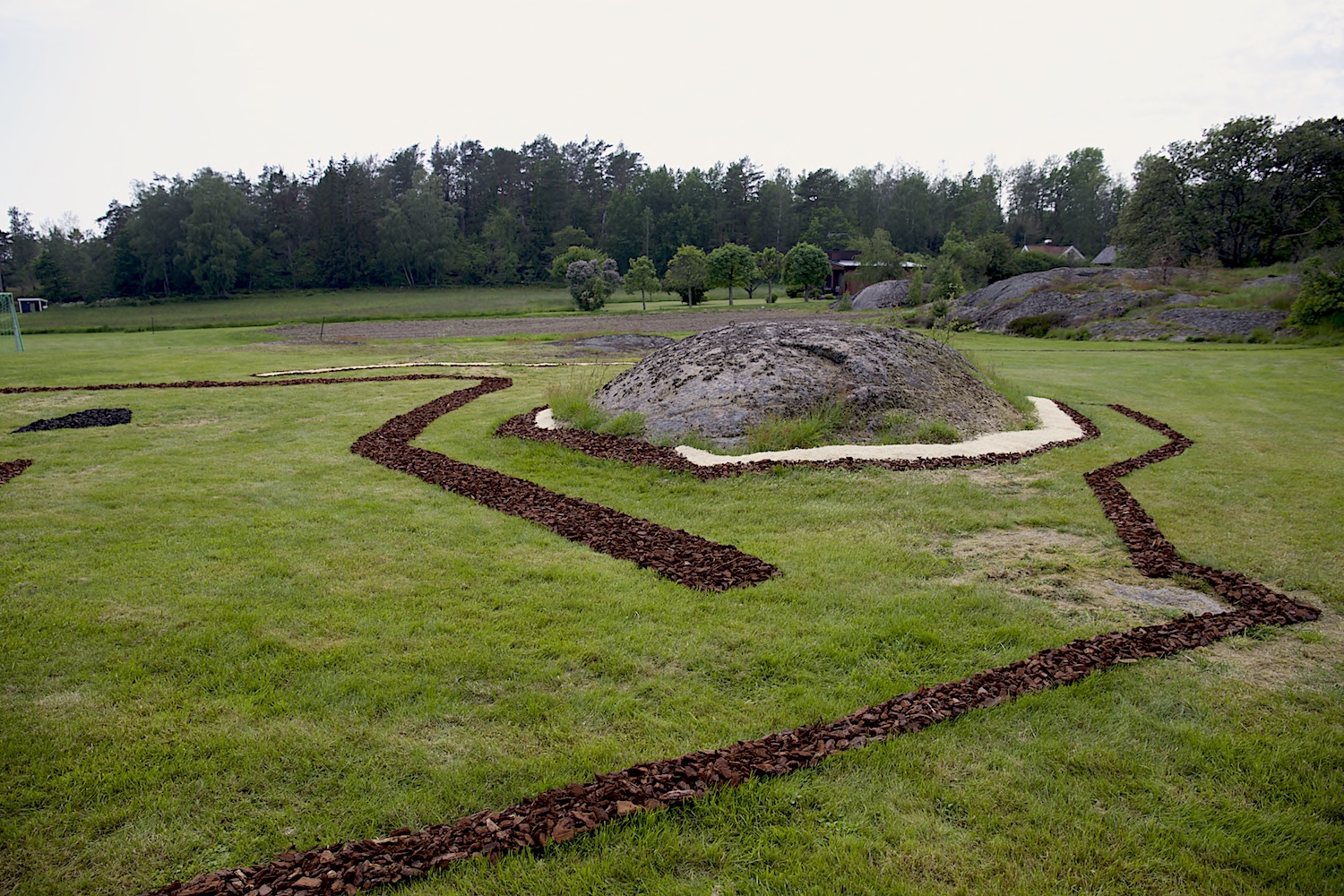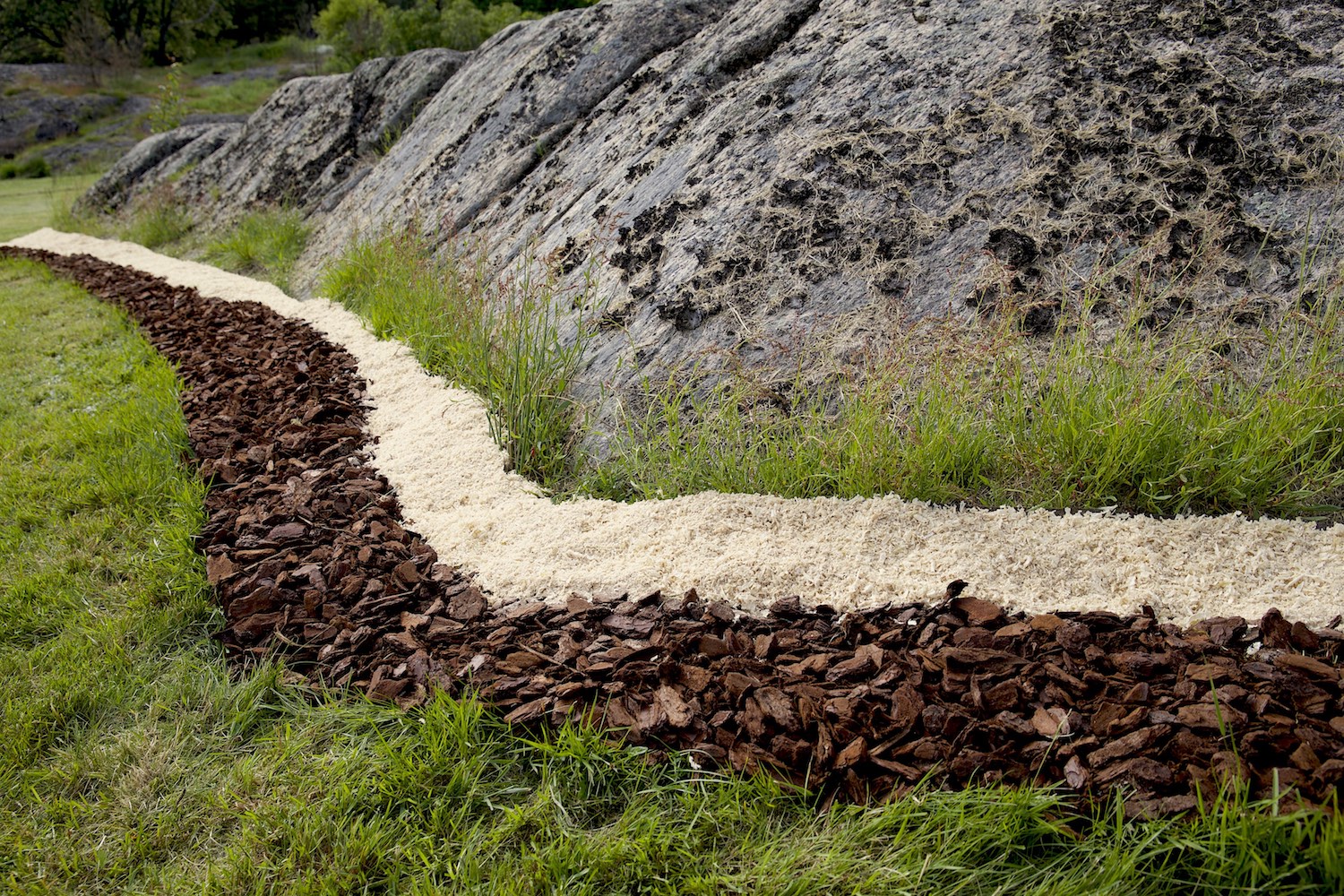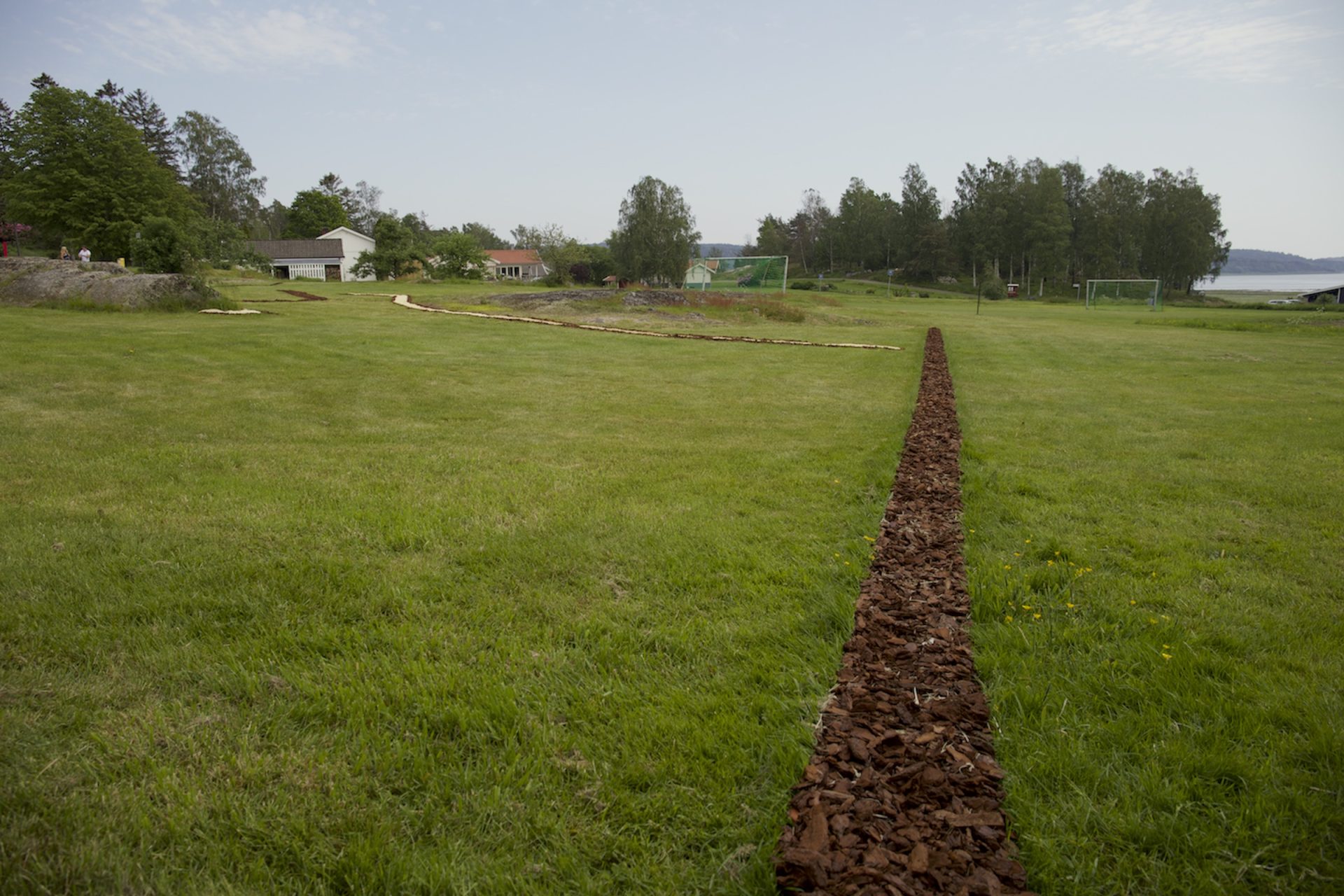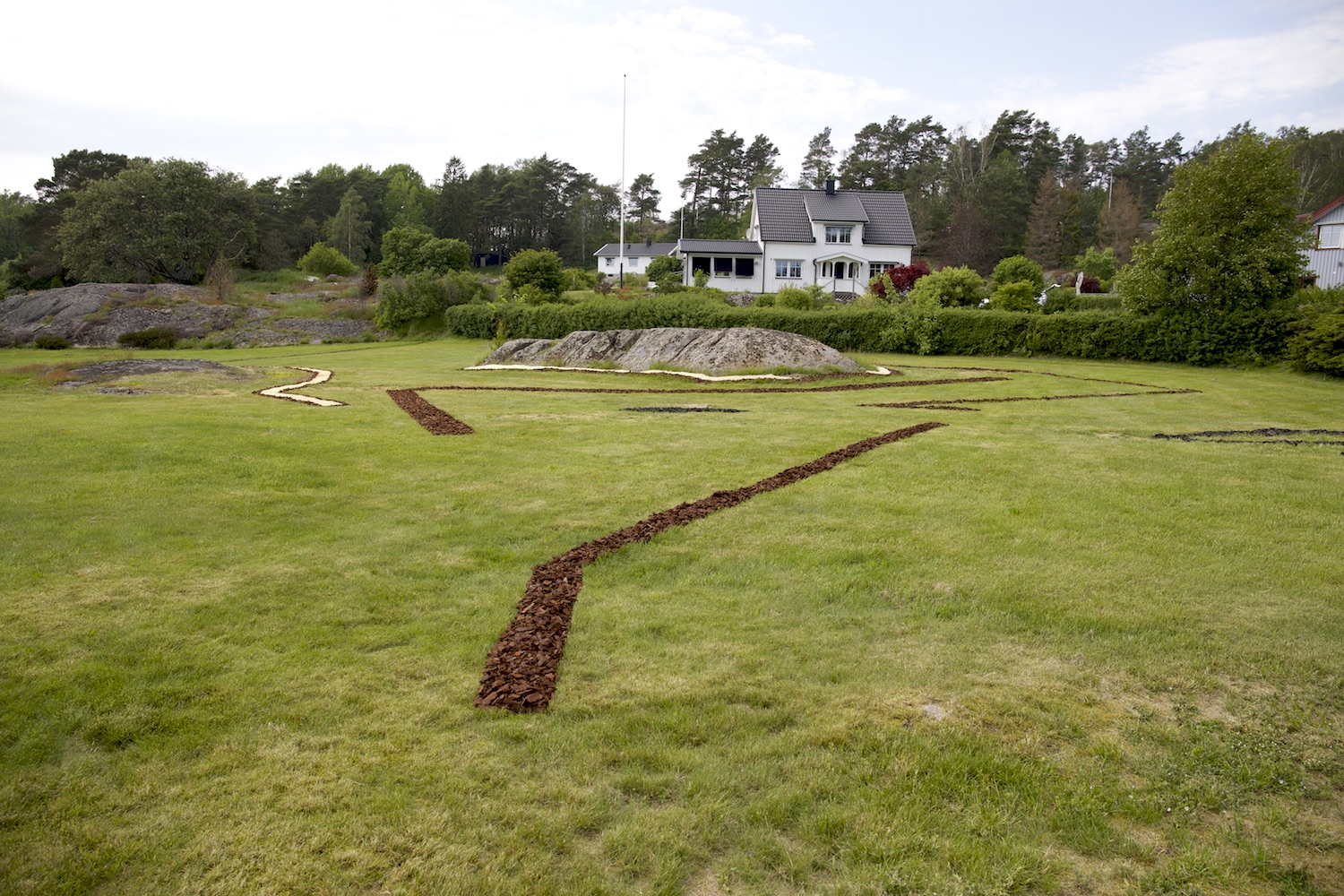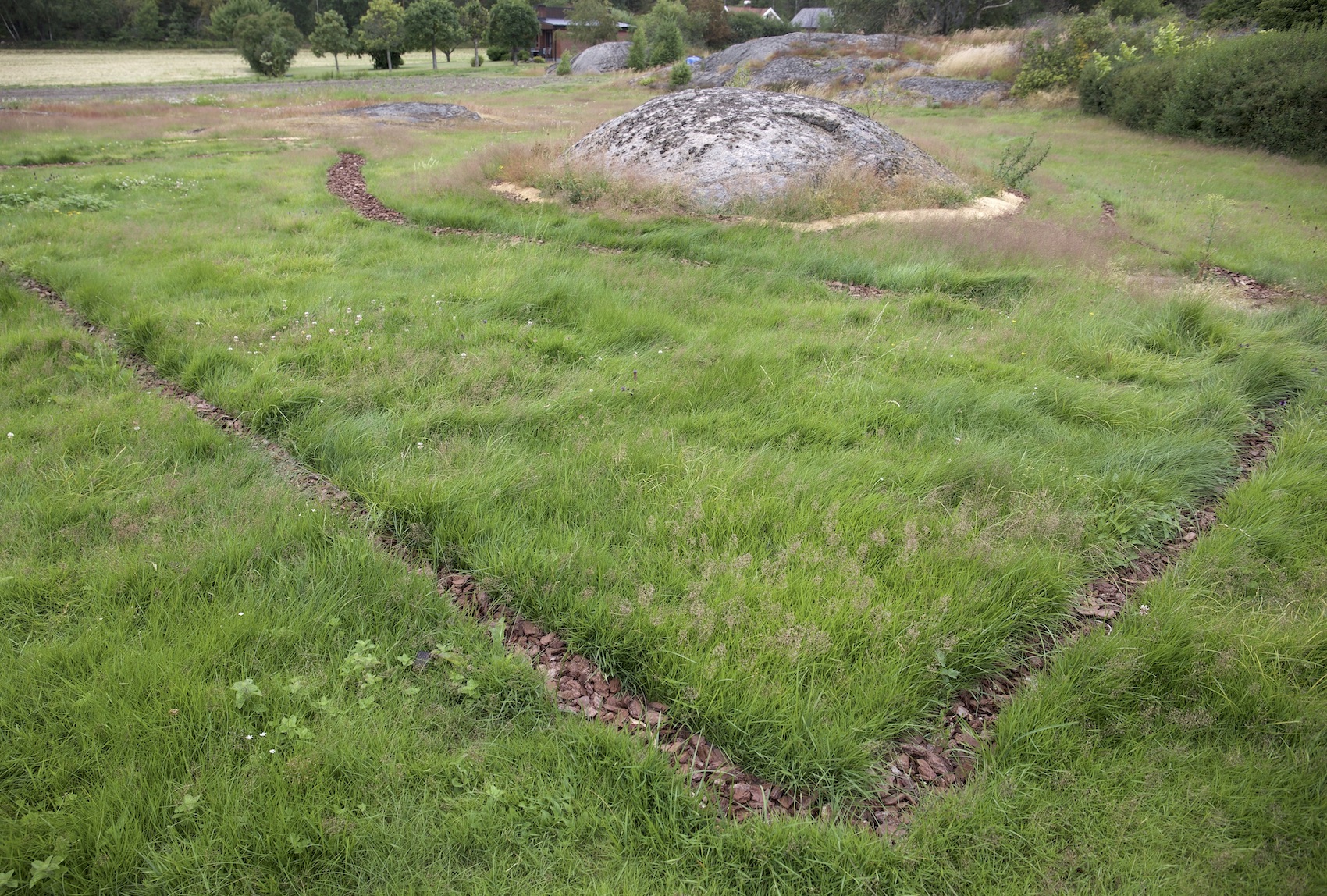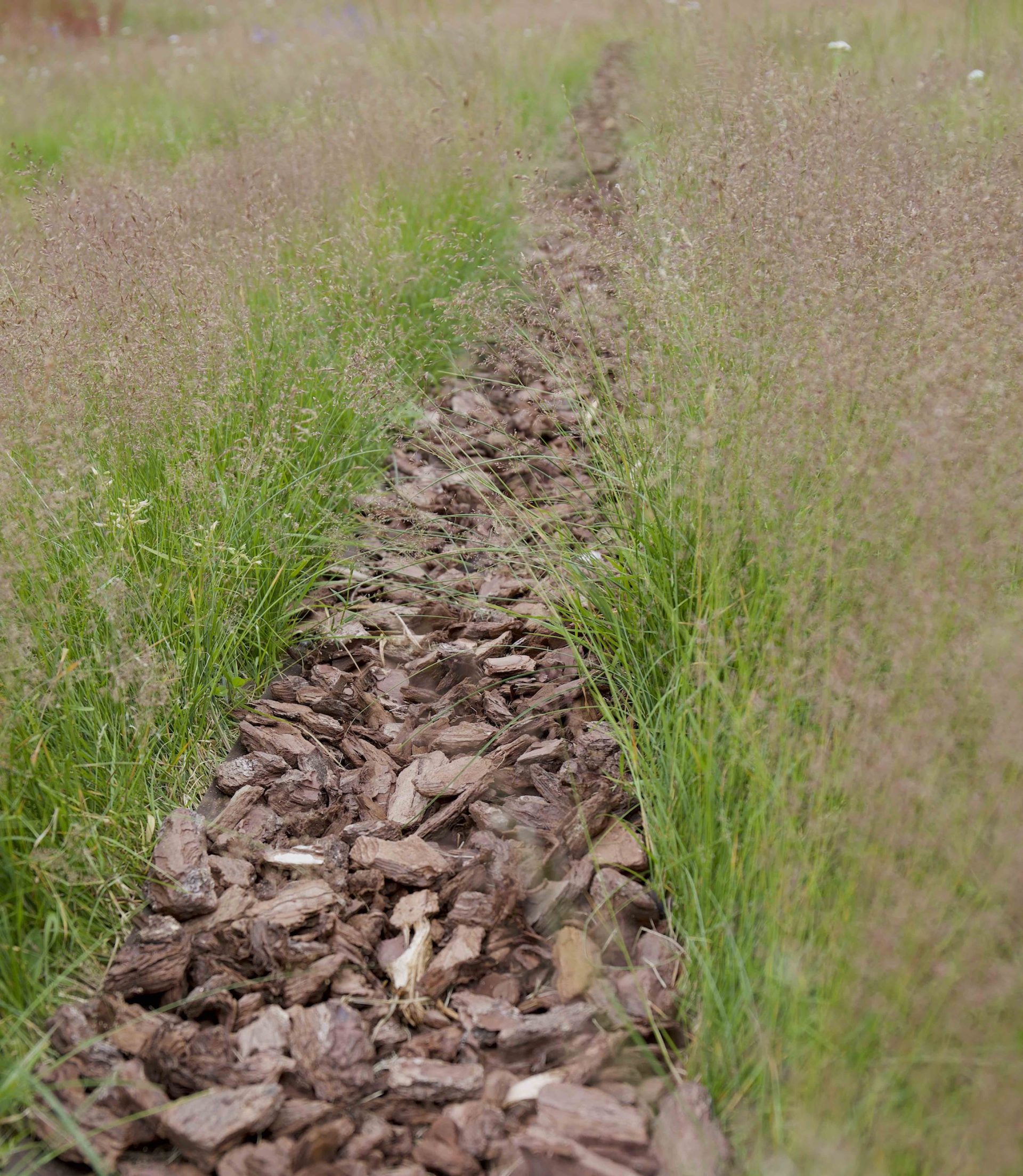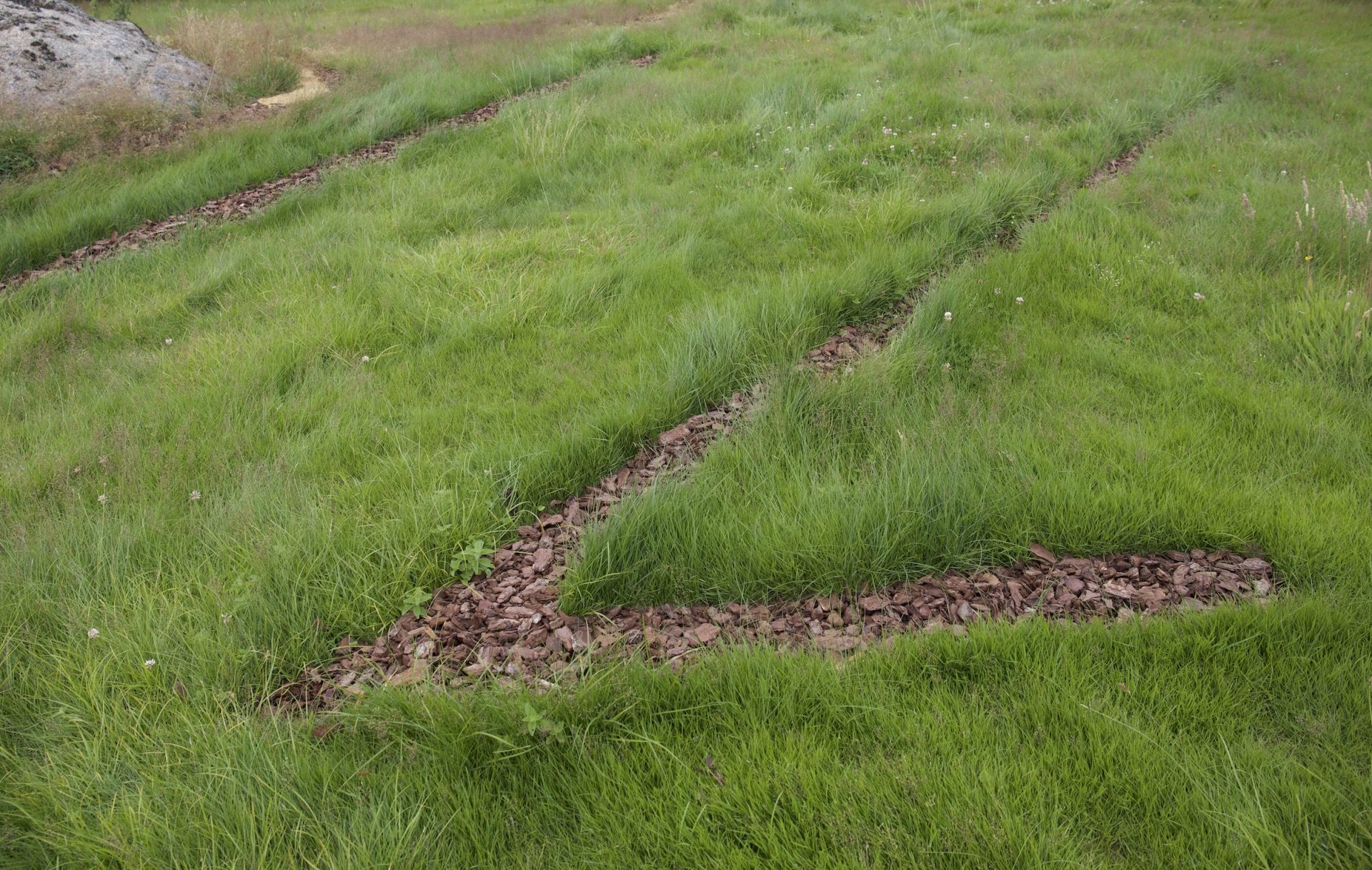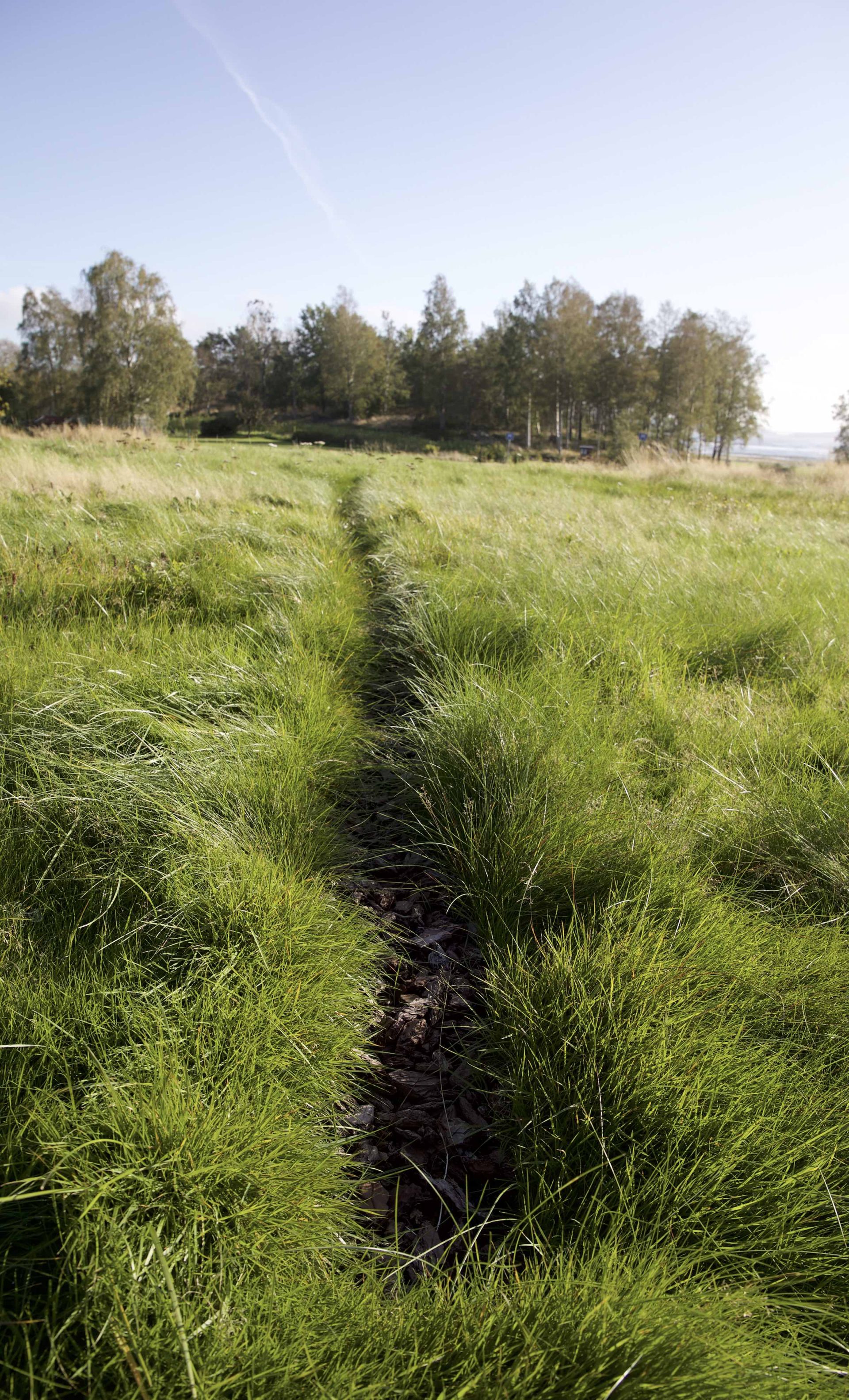Studie nr. 11 (rekonstruerat platsminne)
How do you relate to a place that you have no personal bonds to?
Using drawing as a method I wanted to understand Fjärås not only from its rich cultural, historical and environmental context but, through my hands and body. Inhabited by humans since the Stone Age, I imagined the number of memories stored in the soil and how transport and daily life have changed the landscape over time. I wanted to assimilate the place’s own hidden memories, to be able to understand other aspects. Through the act of drawing body memories are created in relation to the site.
Every place has a memory of its own, human and non-human animals might know parts of its history but, most of the memory is stored and hidden deep down in the earth and stones. As I spent time on my site and bicycling around Fjärås to visit experts from the region I imagined how the landscape has changed over time. Situated at a terminal moraine shaped by the inland ice the old sea beds were a good place for cultivation. The sea provided with fish, transport and travel which made Fjärås ideal to live here historically. At the end of 1800, some farmers began to grow horseradish in combination with other crops to get a higher income. In the 1930s 300 farmers were growing horseradish and today there are only six left. I was told that Fjärås has become a “sleeping town” (sovstad) where people only come to sleep as they work in the cities. How time change the use of the landscape seemed more and more essential for my site.
Study no. 11 (Reconstructed Site Memory) is part of a series that explore and expand the boundaries, methods and materials used in drawing. I wanted to assimilate the movement that had been going on through generations on the site. The movement in drawing as an act is similar to the invisible lines made by walking, growing and harvesting. A small river divided what is now grass, providing fresh water for the humans that chose this place facing the west during the Stone Age. Today the river is erased, as well as a small house where a family with nine children lived in during the 1800. The river and Broström family’s short cut over the grass lane became my starting point for this outdoor drawing. I chose to work with sawdust, red and black mulch in combination with the site’s grass and stones. The lapse of time will interfere with the drawing installation and change it over time as nature takes back what the human once has borrowed.
More information about (X)sites and Study no. 11 (Reconstructed Site Memory) can be found at http://www.landart.se/index.php/LandartArtistProjekt/studie-nr.-11-rekonstruerat-platsminne1/1378
Thanks to Daniel and Lisa Boström, Hjälmeskullas handelsträdgård, XL-bygg, Kungsbacka Konsthall, Fjärås Hembygdsförening and Fjärås Naturum.
